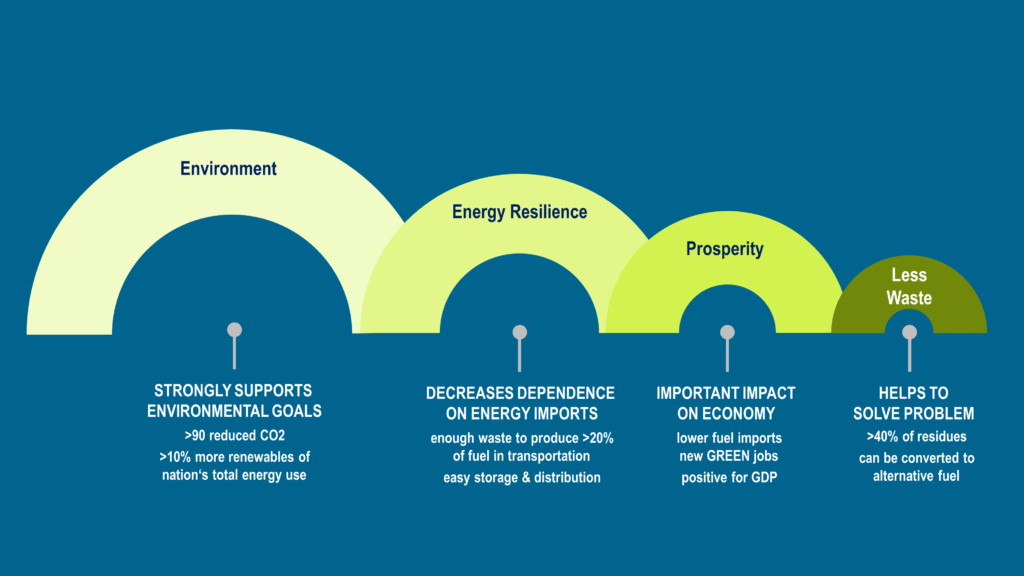Benefits
AAAA + Solution
Availability
Affordability
Accessibility
Acceptability
+
Decarbonize
The conversion of residuals into fuel through SynDi Solution offers remarkable environmental benefits: an impressive carbon reduction, exceeding a reduction of CO2 negative footprint of even over 90%, and also boasts a notably low water footprint due to minimal water usage, both contributing to sustainable resource management.
Safe
It operates out of ATEX zone.
Circular
In a circular approach, residuals sourced from households, industry, and agriculture are not discarded. Instead, they are repurposed and transformed into alternative fuel, ensuring a sustainable and efficient resource utilization mode.
People friendly
It is environmentally friendly and safe for communities as it generates no harmful gas emissions, odors, dust, noise, or any other adverse health impacts.
Zero waste
All by-products generated are versatile and find applications in various other industries, maximizing resource efficiency and sustainability.
Premium profitable
The efficient and user-friendly SynDi Solution, driven by high energy efficiency and cost-effectiveness, meets the growing market demand for alternative fuels. As a result, it offers a rapid payback period.
Who can benefit from the SynDi Solution?
- Governments: Are enabled to implement effective waste management supported by the entire community.
- Waste Management Companies: Can significantly reduce operational costs by even up to 50%.
- Investors in SynDi: Profit from premium alternative fuel production.
- Energy Companies: Gain access to competitive alternative fuel prices.
- Fuel Retailers: Utilize existing storage and distribution infrastructure for convenience.
- End - Users: Enjoy better price - performance compared to fossil fuels.
- Communities near SynDi Plants: Are spared from negative environmental impact.
- Nature: Experiences significant relief from waste and greenhouse gas burdens.

